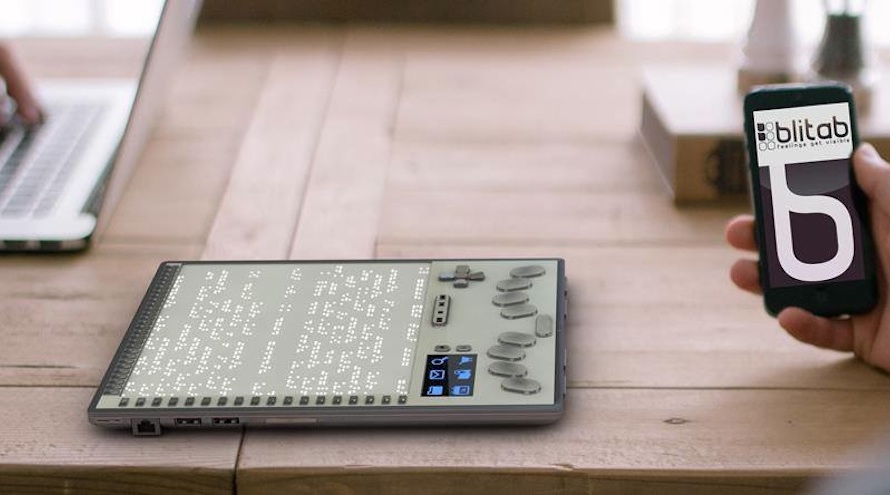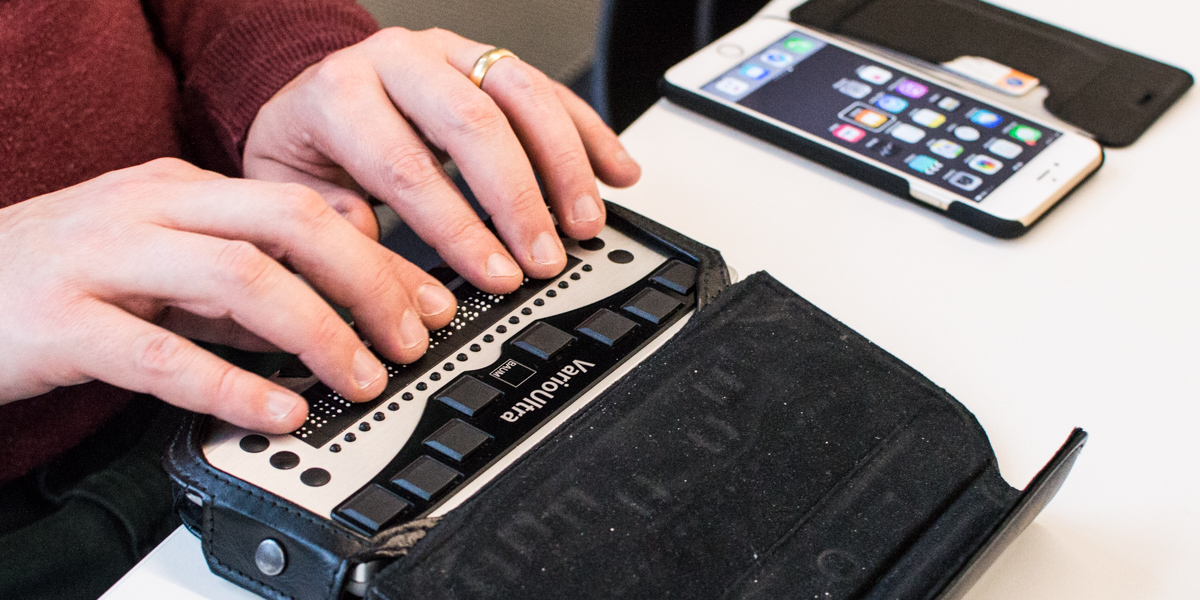AI-Powered Visual Aids: Enhancing Independence for Blind Users
AI-Powered Visual Aids: Enhancing Independence for Blind Users
Blog Article
A Guide to Life-Changing Assistive Innovation for the Blind and Visually Impaired
The improvement of assistive innovation has actually ushered in a transformative era for people that are visually damaged or blind, offering devices that boost freedom and enhance everyday experiences. Technologies such as wise navigating devices and AI-driven applications are redefining just how customers interact with their environments, while available reading options and wise home innovations promise to further raise the high quality of life.
Smart Navigating Tools
Smart navigating tools are transforming the way individuals who are visually damaged or blind communicate with their environment. These sophisticated technologies, which integrate GPS, audio feedback, and haptic signals, offer customers with crucial details concerning their environments, improving their independence and wheelchair.
One prominent example is using smart walking sticks equipped with sensing units that spot challenges and provide real-time responses with vibrations or audio hints. These tools allow individuals to navigate complicated environments, such as hectic streets or crowded public spaces, with raised confidence. In addition, wearable devices, such as smart glasses, are being established to help in recognizing faces, reviewing message, and recognizing items, even more augmenting the user's spatial recognition.
Furthermore, wise navigation devices are progressively integrating expert system to evaluate information and adapt to users' preferences. This individualized technique not just enhances navigating efficiency however also fosters a feeling of empowerment among individuals. As technology remains to advancement, the potential for wise navigating devices to create a more comprehensive and accessible world for individuals who are blind or visually impaired continues to be promising, eventually improving their day-to-day experiences and communications.
Cutting-edge Mobile Applications
Mobile applications are emerging as powerful tools for aiding people that are aesthetically impaired or blind, supplying a series of functionalities that enhance daily living. These applications harness advanced technology to assist in day-to-day tasks, enhance ease of access, and advertise freedom.
One group of cutting-edge mobile apps concentrates on visual acknowledgment. Applications like Be My Eyes attach individuals with sighted volunteers through video calls, making it possible for real-time support for tasks such as checking out labels or navigating unfamiliar settings. Applications like Seeing AI use fabricated knowledge to define surroundings, checked out message, and recognize items, giving customers with critical info at their fingertips.
An additional considerable area is navigation and positioning. Applications such as Aira and Neighboring Traveler supply audio advice, aiding individuals navigate urban rooms with convenience. They provide tailored aid, permitting a much more certain exploration of the atmosphere.
Additionally, health and health apps provide to specific needs, such as medication monitoring and physical fitness monitoring. These applications aim to cultivate an alternative technique to wellness, making sure that users can keep their health independently.
Wearable Assistive Devices
Wearable assistive tools represent a considerable improvement in modern technology made to support people who are blind or aesthetically damaged. These gadgets improve wheelchair and independence by offering real-time responses about the surrounding atmosphere. Among one of the most noteworthy wearable innovations are smart glasses equipped with cameras and sensing units, which can identify challenges and relay essential information via audio signs.

Another cutting-edge choice consists of wrist-worn gadgets that utilize ultrasonic waves to spot barriers and give navigational assistance. These tools usually come with customizable setups, permitting customers to customize the alerts to their specific requirements.
The assimilation of synthetic knowledge in wearable assistive modern technology is additionally significant, as it consistently enhances the accuracy and responsiveness of these devices. Overall, wearable assistive gadgets are changing the lives of the blind and aesthetically damaged, promoting better autonomy and improving top quality of life with innovative services.
Available Checking Out Solutions
Obtainable reading services play a critical duty in allowing individuals that are blind or visually impaired to involve with text across numerous formats. These remedies incorporate a variety of technologies and devices developed to boost reading experiences, from standard print products to digital web content.
One noticeable solution is Optical Personality Recognition (OCR) innovation, which converts printed message into digital layout, enabling customers to listen to or review the material utilizing this contact form display visitors. Furthermore, specialized e-readers outfitted with text-to-speech abilities supply adjustable reading experiences, making it possible for individuals to change font sizes and background shades for enhanced presence.
An additional effective approach is braille screens, which provide tactile feedback by transforming electronic text into braille. This permits people to check out touch, promoting higher independence and access to literature. Mobile applications developed for reading checked publications or papers can empower customers with instantaneous access to a vast library of products (Braille displays and notetakers).

Smart Home Technologies
Smart home innovations have reinvented the method people that are blind or visually impaired connect with their living environments, enhancing both self-reliance and security. These ingenious services leverage automation and connectivity to create an easily accessible living area tailored to the demands of individuals.
Smart speakers and voice-activated aides give hands-free control over different gadgets, allowing individuals to change illumination, protection, and temperature steps through simple voice commands. This capability lessens dependence on sighted aid and promotes a sense of autonomy. Furthermore, smart illumination systems can be tailored to supply auditory comments or responsive cues, allowing individuals to browse their homes better.
Furthermore, protection systems equipped with smart electronic cameras and sensing units can send out real-time alerts to customers, improving personal security without demanding visual confirmation. Automated door locks supply comfort, allowing users to protect their homes effortlessly.
Integrating wise home modern technologies not only improves day-to-day living however likewise urges social communication with linked gadgets - Mobility aids for visually impaired users. With recurring advancements in assistive technology, the future shows up encouraging, as more remedies will certainly emerge to additional empower people that are blind or visually damaged, making sure a more independent and inclusive way of living
Verdict
To conclude, the improvements in assistive technology for the aesthetically damaged and blind represent a considerable jump towards boosting freedom and lifestyle. Smart navigation tools, innovative mobile applications, wearable tools, obtainable analysis services, and wise home technologies collectively promote a comprehensive environment. This assimilation of innovation not only improves flexibility and everyday living but additionally equips individuals to involve completely with their surroundings, advertising greater autonomy and participation in culture.
Advancements such as wise navigating gadgets and AI-driven applications are redefining how customers communicate with their surroundings, while easily accessible analysis options and clever home innovations assure to additional elevate the high quality of life. As technology proceeds to advancement, the possibility click for more for smart navigation tools to create a more comprehensive and obtainable world for people who are blind or aesthetically my review here damaged remains appealing, eventually reshaping their everyday experiences and communications.
Wearable assistive tools represent a substantial advancement in modern technology developed to sustain individuals who are visually damaged or blind. Amongst the most noteworthy wearable innovations are clever glasses geared up with cams and sensing units, which can recognize barriers and relay critical information with audio hints.
Smart navigation devices, ingenious mobile applications, wearable gadgets, obtainable analysis solutions, and wise home innovations jointly cultivate a comprehensive setting.
Report this page